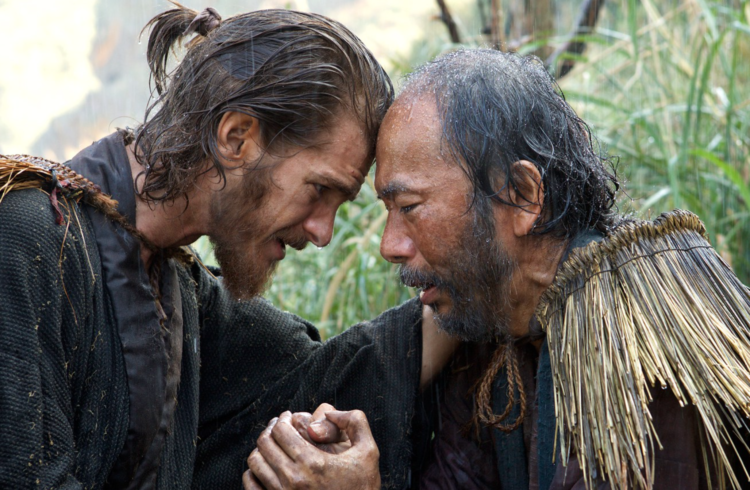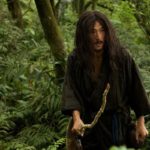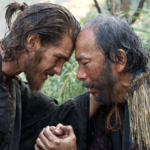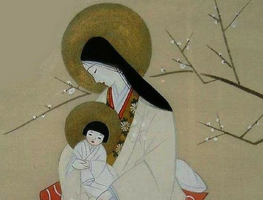There’s a lot of interest lately in Silence—the book by Shusaku Endo. Director Martin Scorsese is releasing a movie based on the book just before Christmas. And Makoto Fujimura recently released a beautiful book on it.
Shusaku Endo has always fascinated me. As a Japanese Catholic, he wrote about many things but he was one of the few who articulated the challenge of merging Christianity with Japanese identity.
Bringing Jesus to Japan
In Silence, Shusaku Endo writes of the journey of Portuguese Jesuits journeying to Japan. It is a conversation about those who intend to take the path of Jesus, only to find they are on the path of Judas. It elevates a faith lived out in real world struggle, over the theological proclamations of the ivory tower.
Silence deals with the public space in which faith is lived out. It is a myth that the Christian faith is a private one—Christian faith is embodied at the shared table, the community of worship, the proclamation of faith, and baptism.
In Silence there is a violent clash between the individual expression of faith, and the communal consequences. Having communal consequences for individual choices is not at all foreign to Japanese culture. It exists in the collective celebration (or shame) in response to one person’s actions that ripple throughout the community. And collective consequences are one of the things the antagonists in Silence exploit—having never left an individual mindset, the priests are unsure of what to do.
In a subtle way, the public expression of faith is often taken as a reflection of the inner state of faith. What outward and individualized signs do we use to legitimize a person’s faith–the ability to sign the right faith statement, the doctrinal alignments, association with certain communities of faith, a stance on a current issue. Silence challenges the ability for outward expressions, to adequately reflect internal faith. But it also calls us to interrogate the idea of an individualized faith. Silence challenges the ability for outward expressions to adequately reflect internal faith. Click To Tweet
The “Individual Believer Myth”
This interrogation of the individual believer myth was something that I wrestled with as an active part of my discipleship. My Japanese upbringing, communicated to me that I was a part of a community, a heritage, and a people. My dreams and aspirations were not my own. And my choices were not mine alone. Overlay that with an evangelical, independent individual framework, and faith became a boxy cage very quickly.
So I did my discipleship dance–asserting my “independence” in Christ made me appear very selfish to others as it appeared that I denied the requests of family for the sake of a new, and demanding faith community. I argued to myself that my family, was my new family in Christ. Let’s just say that didn’t go over very well. How does “bringing all areas of life under the Lordship of Christ” work when some areas of your life are not yours alone? How do you bring your life under the Lordship of Christ when some areas are not yours alone? Click To Tweet
Silence’s Deadly Questions
Silence introduces readers to some of the eternal questions of faith that transcend cultures and peoples. But embedded in the work are powerful observations that challenge the cultural assumptions that we accidentally bring, unknowingly, and overlay onto the faith.
Acting without reflecting on the implications of our cultural point of view to our expressions of faith can be dangerous, even deadly. And it is this much needed space for cultural reflection that Silence provides brilliantly.









Missio Alliance Comment Policy
The Missio Alliance Writing Collectives exist as a ministry of writing to resource theological practitioners for mission. From our Leading Voices to our regular Writing Team and those invited to publish with us as Community Voices, we are creating a space for thoughtful engagement of critical issues and questions facing the North American Church in God’s mission. This sort of thoughtful engagement is something that we seek to engender not only in our publishing, but in conversations that unfold as a result in the comment section of our articles.
Unfortunately, because of the relational distance introduced by online communication, “thoughtful engagement” and “comment sections” seldom go hand in hand. At the same time, censorship of comments by those who disagree with points made by authors, whose anger or limited perspective taints their words, or who simply feel the need to express their own opinion on a topic without any meaningful engagement with the article or comment in question can mask an important window into the true state of Christian discourse. As such, Missio Alliance sets forth the following suggestions for those who wish to engage in conversation around our writing:
1. Seek to understand the author’s intent.
If you disagree with something the an author said, consider framing your response as, “I hear you as saying _________. Am I understanding you correctly? If so, here’s why I disagree. _____________.
2. Seek to make your own voice heard.
We deeply desire and value the voice and perspective of our readers. However you may react to an article we publish or a fellow commenter, we encourage you to set forth that reaction is the most constructive way possible. Use your voice and perspective to move conversation forward rather than shut it down.
3. Share your story.
One of our favorite tenants is that “an enemy is someone whose story we haven’t heard.” Very often disagreements and rants are the result of people talking past rather than to one another. Everyone’s perspective is intimately bound up with their own stories – their contexts and experiences. We encourage you to couch your comments in whatever aspect of your own story might help others understand where you are coming from.
In view of those suggestions for shaping conversation on our site and in an effort to curate a hospitable space of open conversation, Missio Alliance may delete comments and/or ban users who show no regard for constructive engagement, especially those whose comments are easily construed as trolling, threatening, or abusive.